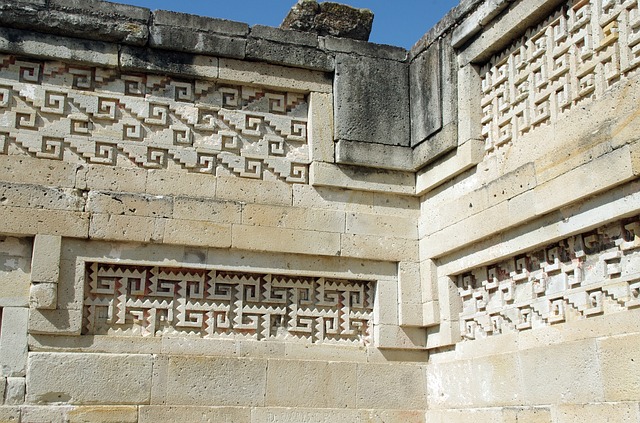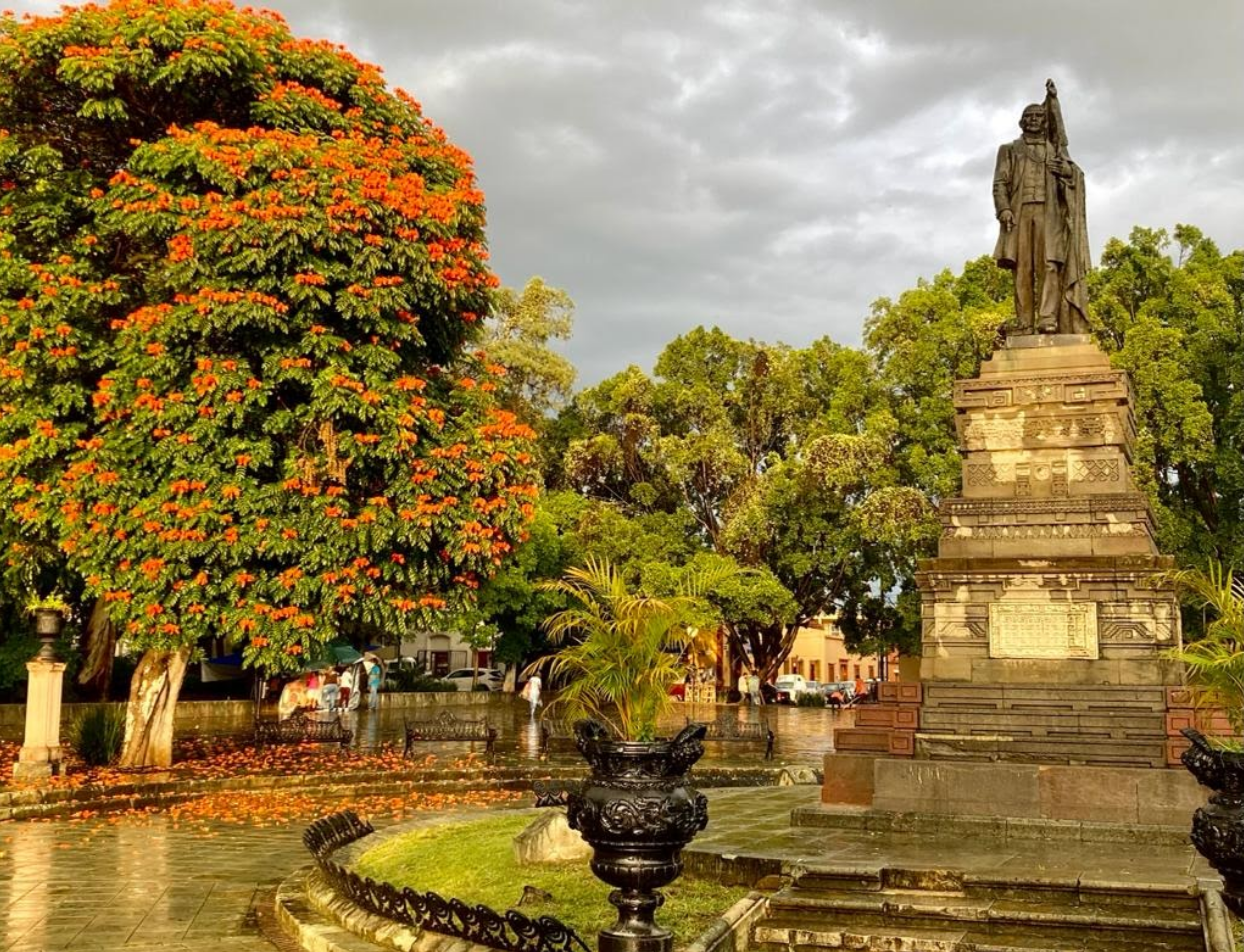10 Fascinating Facts About Oaxaca

By Amber Dunlap
Oaxaca’s mild climate, rich culture, distinct cuisine, and penchant for larger-than-life celebrations is what puts Oaxaca on the map for many travelers, but do you know how Oaxaca got its name or why its indigenous traditions are so vast and varied? Do you know about the pivotal figures that once called this Mexican state home or the reason its prehistoric and colonial architecture still stands? In this blog post, we share ten facts that will leave you with a greater appreciation for the details and depth that make a trip to Oaxaca so special.
1. Oaxaca is the birthplace of corn and squash.

Nestled in a fertile valley at 5,085 feet above sea level (1,550 meters), Oaxaca’s rugged terrain and year round temperate climate allowed the region’s earliest civilizations (the Zapotec and Mixtec people) to domesticate a wide range of plants and animals, to include corn (maize) and squash. Pineapples, avocados, beans, cacao, chili peppers, tomatoes, pumpkin, zapotes, and maguey also grew wild on Oaxaca’s fertile grounds, while turkeys, deer, iguana, and armadillo roamed the landscapes too.
2. The Oaxaca valley has been inhabited since 11,000 B.C.

Source: Pixabay
It’s true. The caves of nearby Mitla bear evidence of human habitation in the Oaxaca Valley that dates as far back as 11,000 B.C., while archaeologists have determined that agriculture and more sedentary groups began somewhere between 5,000 and 2,000 B.C., before even the Egyptian pyramids were a thought in the minds of the Ancient Egyptians. By 500 B.C., around the same time the Roman Empire was being established, much of the Central Valley of Oaxaca had been settled by the Zapotec people who eventually constructed the hilltop city of Monte Albán. Just two hundred years later, the Mixtec moved in and began to compete for Zapotec territory. By the mid-15th century, it was the Aztecs who had full control of the land and who held it until the Spanish conquest began with the arrival of Hernán Cortés, the first Marquess of Oaxaca. All of this change of hands and power took place in the verdant valleys of Oaxaca while the rest of the world was being introduced to the printing press, Columbus was landing in the Caribbean, the black death was plaguing Europe, and traders were following the Silk Road.
3. Oaxaca’s colonial center and Monte Albán archaeological zone are designated UNESCO World Heritage sites.

Added to UNESCO’s esteemed list in 1987, Oaxaca’s mostly 16th century architecture and nearby pre-hispanic ruins of Monte Albán are well preserved and well intact. As you wander Centro, you can still admire original 16th century art, baroque construction, and the indigenous influences that made their way into both. As you explore the Zapotec-built city of Monte Alban, you can touch its still standing temples and carved stone structures, all of which have survived centuries of valley-shaking earthquakes and even the otherwise temple-destroying Spanish Conquest.
4. Oaxaca is surrounded by towns and villages that each specialize in their own unique handicraft.

Source: Pixabay
One of the characteristics of Oaxaca that sets it apart from most destinations in Mexico and the world, is its rich assortment of artisanal culture and heritage. The valley that surrounds the city is dotted with pueblos dedicated to their generation-spanning craft, be it the handwoven wool rugs of Teotitlan del Valle, the burnished black clay pottery of San Bartolo Coyotepec, the fanciful alebrijes of San Martin Tilcajete, or the green-glazed ceramics of Santa Maria Aztompa. In Oaxaca, you can hop from village to village and discover an entirely different multi-generational tradition by way of the countless family-run workshops that keep it going to this day.
5. Oaxaca is considered one of Mexico’s gastronomic capitals.

Oaxacan cuisine is beloved by Mexicans and travelers alike for its distinct flavors and combinations you won’t find anywhere else. In fact, Oaxaca is nicknamed “the land of seven moles” as each of the state’s seven regions produces its own variation of the spicy mole sauce. Dine on cecina, tlayudas, tamales, chapulines, squash blossom soup, and huitlacoche and adorn your tacos, tostadas, and memelas with local herbs like pitiona, hoja santa, chepiche, and epazote. Wash down every bite with a hot chocolate or mezcal, two of Oaxaca’s other gastronomic claims to fame.
6. Oaxaca is the most ethnically and linguistically diverse state in México.

Source: Pixabay
Of the 570 municipalities in Oaxaca, 418 of them are predominantly indigenous. This translates to the fact that there are more speakers of indigenous languages in the state of Oaxaca than in any other state in Mexico. The Zapotec and Mixtec languages and traditions are the most dominant of the still intact indigenous cultures and chances are you’ll experience them firsthand during your visit, be it through the food, the handicrafts, the archaeological ruins, on signage or while you’re village hopping through the valley. The reason for so much diversity is due in large part to the rugged mountain terrain that left many of these groups to develop in relative isolation from one another.
7. The origin of Oaxaca’s name comes from the Aztec’s Nahuatl language.

Source: Pixabay
Oaxaca’s often mis-pronounced name comes from the Nahautl-speaking Aztecs. After establishing their garrison around what is now called Cerro del Fortín, they named the site Huāxyacac, meaning “place of the guaje trees.” You can still find these trees of Oaxaca’s namesake scattered about the city’s streets and hillsides. Just look for the narrow foot-long green and seed-filled pods that hang from its branches and you’ll know you’ve spotted one. But how did “Huāxyacac” become “Oaxaca”? Enter the Spanish conquistadors who transliterated the pronunciation of the x in Huāxyacac from “sh” to the modern Mexican Spanish “j”. Today, Oaxaca is pronounced “waˈhaka” instead of its original Nahautl pronunciation of “waˈshaka”.
8. Oaxaca is the home of mezcal.

Mezcal has made its way to the international beverage stage, but its roots are proudly here in Oaxaca. This smoky spirit comes from the agave that grows all over the state. While you’re visiting Oaxaca, you’ll have plenty of opportunities to sample from a selection of many different types of mezcal varieties either at one of Centro’s countless mezcalerias or at the palenque itself where you can witness the age-old mezcal production process from agave to your glass.
9. Ex-President Benito Juarez’s name is everywhere!

Born into an impoverished Zapotec family in the Oaxacan countryside, Benito Juarez went on to become a lawyer, politician, and the first president of indigenous descent in Mexico. Besides his indigenous roots and political success, he is most famous for leading the fight against French occupation in the 1860’s. Upon his death, the city of Oaxaca proudly added “de Juarez” to its name to honor him and his contribution to Mexico’s freedom from foreign rule. His name also appears on various buildings, streets, and institutions all over the city and state and his birthday, March 21, is now celebrated as a national holiday, an honor no other Mexican individual has received to date.
10. Oaxaca’s annual Guelaguetza festival is one of the most lively and colorful celebrations in all of Mexico.

This list would not be complete without a mention of Oaxaca’s annual and grandiose celebration of Guelaguetza. On the last two Mondays of July, dancers from Oaxaca’s seven regions come together to celebrate their music, dance, food, and traditions in the open-air amphitheatre that crowns Cerro del Fortín (look for the big white tent-like structure on the hill to the West of the city). Between the performances, the city and surrounding pueblos alight with the cuisine, costumes, dance, and artisanal handicrafts of the state. It’s one of the most festive times to visit Oaxaca and the best way to experience the rich and diverse indigenous traditions that set Oaxaca apart from the rest of the world.
About the Author
 Amber Dunlap is a freelance travel writer originally from the United States. Since early 2016, she’s been moving from country to country all over Latin America, but it’s Oaxaca that has ultimately captured her curiosity these days. You can follow her street-by-street Oaxaca explorations on her personal travel blog or over on Instagram at @nomapsamber.
Amber Dunlap is a freelance travel writer originally from the United States. Since early 2016, she’s been moving from country to country all over Latin America, but it’s Oaxaca that has ultimately captured her curiosity these days. You can follow her street-by-street Oaxaca explorations on her personal travel blog or over on Instagram at @nomapsamber.
